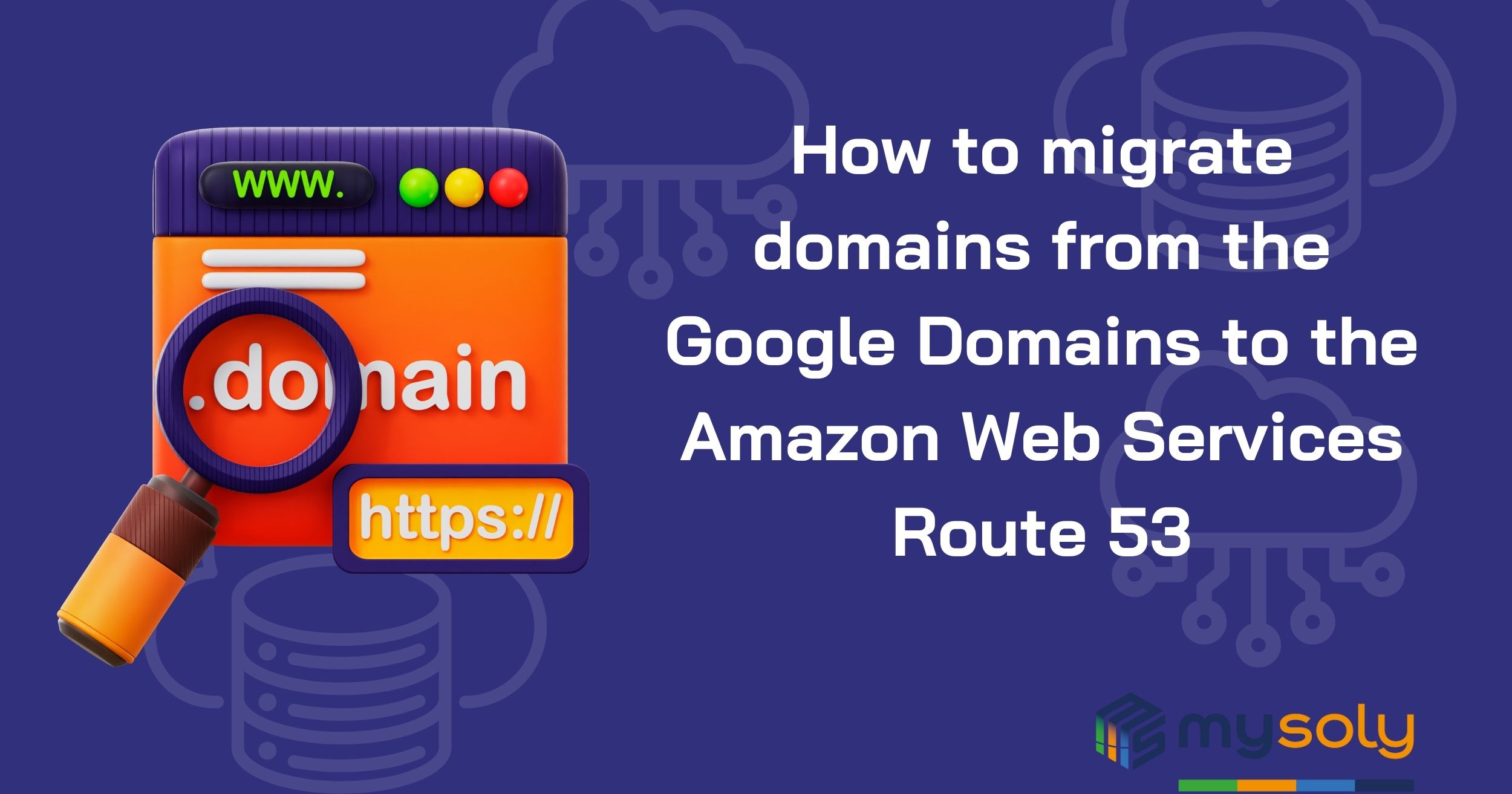How to migrate domains from the Google Domains to the Amazon Web Services Route 53
Introduction
The technology industry continues to surprise us. On June 15, 2023, Google announced to their users that Google Domains has been sold to Squarespace. As a result, all current Google Domains user accounts will be transferred to Squarespace. Many users favored Google Domains due to its user-friendly interface and affordability. However, after its sale, many users sought alternatives. In this article, we will provide information on how to migrate your domain to Amazon Route 53, which is the most logical choice among the alternatives offered by Amazon Web Services (AWS).
Select the domain you want to migrate from Google Domains to AWS
In your Google Domains account, locate the domain you intend to transfer. Click on Manage on the right-hand side to access the domain’s settings.
Turn off DNS Security (DNSSEC)
Before migrating a domain, you must turn off any DNS security features. To do this, click on the DNS menu on the left-hand side of the screen and scroll down to the DNSSEC section. On the right-hand side of the screen, you will find a link to “Turn off” the DNSSEC features.
When you choose to turn off the DNSSEC features, you will receive a notification that the process may take up to two days. However, we were able to complete the migration without any issues.
Changing Name Server from Google Domains to AWS
We will alternate between using Amazon Web Services (AWS) Route53 and Google Domains. The initial action is to access the Route53 console within your Amazon Web Services (AWS) account.
Create “Hosted zone”
Select the “Hosted zones” option from the left-hand menu and create a hosted zone using the button on the right-hand side of the screen.
You’ll need to provide the domain name and select a type. We chose to keep it public and created the hosted zone.
After setting up the hosted zone, we will find a list of name servers under the NS records section. Enter these name servers in Google Domains to prevent any downtime during the domain transfer process. It is essential to follow this step for a seamless transition.
Returning to the DNS section in Google Domains, click the “Custom name servers” tab located at the top of the screen. This will allow you to access a list of inputs where you can enter the servers from the Amazon Web Services (AWS) hosted zone.
After we set the name servers, they will not be automatically active. We need to inform Google Domains and request that they switch to using these name servers for DNS requests.
After choosing to switch to custom name servers, a green bar will appear to confirm that they will be used, but it may take time for them to spread.
Unlock the domain for transfer
Under “Registration settings”, you must select the option to lock or unlock migration. Failure to do so will prevent you from completing the migration.
Get started migration to AWS
Returning to Amazon Web Services (AWS) and navigating to the Route 53 section, transfer a single domain by selecting the “Transfer in” option located under “Domains / Registered domains” on the left-hand side.
Enter the domain you wish to transfer. The system will verify if it is transferable. Note that if the transfer lock and DNSSEC are enabled, this process will not work. Be sure to check the box confirming completion of the listed steps and select “Next”.
Here we need to enter a transfer code, which can be obtained from Google Domains.
Returning to Google Domains, navigate to the “Registration settings” section and scroll down until you locate the “Transfer Out / Get auth code” link.
Before accessing the code, we will need to log in to our Google account once more.
We will be taken back to Google Domains and shown an authorization code pop-up window.
Returning to Amazon Web Services (AWS), enter the code, and click “Next” to view the cost for transferring your domain and setting up autorenewal.
We enter our contact information for the registrar. An active email address is required to confirm our contact details.
Since we have already established the new name servers, we can retain them. Additionally, Google Domains will display the authentication code we received.
Finally, the document will display a summary of the entered price and contact information.
Check the agreement and “Submit request”.
Now in Route 53 under “Domains / Requests”, we will observe a transfer request that has been submitted and is pending.
Approve Transfer
After submitting our request, expect an email from Google Domains prompting you to either approve or cancel the request. The email may take a few minutes to arrive. Once we receive the email, click the blue button located in the body of the message.
We will be directed to a Google Domains screen prompting you to accept the “Transfer”.
Upon acceptance of the transfer, we’ll receive an email from Amazon Web Services (AWS) requesting us to confirm our email address by clicking the link within its body. This communication confirms our contact information with the registrar.
Upon confirmation, a confirmation email will be sent. This task must only be completed once, rather than separately for each domain transfer.
Once all necessary steps have been taken, we will be notified via email that our domain transfer has been completed.
Confirm Transfer
Return to Amazon Web Services (AWS) and go to Route 53 under “Domains / Registered domains”. We should now be able to view the transferred domain, indicating that we are finished. The only remaining task is to set up your DNS records in our hosted zone if we require specific routing.
Adding DNS records
Under “Hosted zones”, we can choose our domain and create a record by clicking “Create record” button.
To host our pages in an S3 bucket, we will create a record that is aliased to an S3 endpoint. Furthermore, we will choose the region where the bucket is located as well as select the bucket from the list provided. It is important to note that the bucket must be named exactly the same as the domain (e.g. “example.com”) or it will not appear in the list.
Congratulations!
We’ve finished transferring our domain from Google Domains to Amazon Web Services (AWS) and configured our DNS to direct to our hosts.
Mysoly | Your partner in digital!



